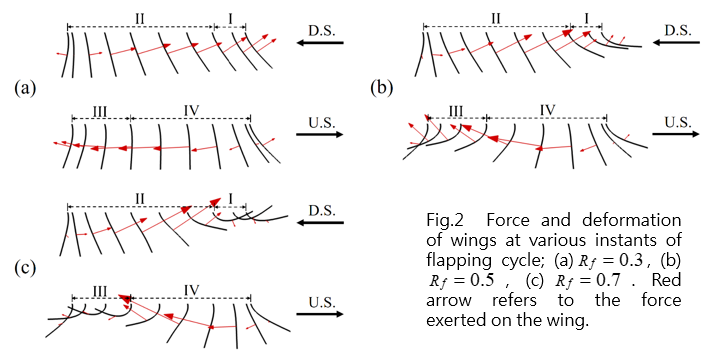In this study, we numerically examine the effect of wing flexibility on the lift force generated by a modeled flapping wing that simulates an insect flight in hover mode. The flow field around the flapping wing is assumed to be two-dimensional (2D), and the flow equations are formulated with the notion of “immersed boundary” for easy handling of the moving-boundary problem. In the 2D framework, the wing chord is treated as an elastic filament. To account for the large deformation in the wing, the motion of the filament is modeled using a geometrically nonlinear equation for bending beams. Both sets of equations are then solved according to the fluid-structure interaction concept using appropriate numerical schemes. Time variation of lift force on the wing is calculated for different values of wing flexural rigidity. Effects of elastic deformation of the wing and interactions between the bending wing and vortical flow structure are discussed. Flexural rigidity that gives the highest average lift force on the wing is sought. In summary, the elasticity of the wing has a significant effect on its lift force production; too high or too low flexural rigidities of the wing all have negative effects on the lift force (Figs.1 & 2). Additionally, the analysis in this study also indicates that the vortex-pair capture phenomenon plays a key role in the improvement of the flapping lift force (Fig.3). If the wing deformation caused by the elasticity of the wing can suitably tie in with the development of vortices in the flow field to form a superior vortex-pair capture effect, the lift force on the wing can be effectively enhanced. (機械系伍次寅教授提供)


